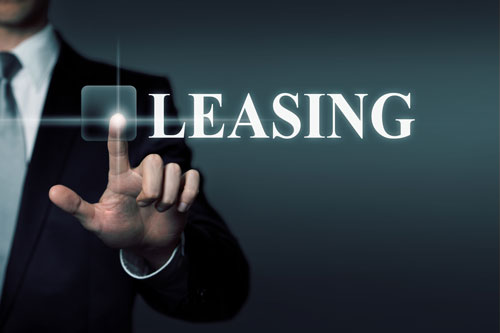Bank Loan or Equipment Loan or Equipment Lease?
Business owners have options when it comes to commercial equipment financing. The most common are bank loans, equipment loans, and equipment leases. This post will address the advantages and disadvantages of each.
What’s the difference?
Bank Loan
If you have a good credit history you can qualify for a bank loan. Depending on available terms at your bank, these loans can have the lowest payout. If you are buying new equipment and your dealer or bank qualifies you for promotional-rate financing, such as 0%-5%, take that money and run. No one can offer you better terms.
Advantages:
- Typically the lowest payout over the life of the loan
Disadvantages:
- Small credit window – 85% of applicants are declined
- Typically require significant down payment
- Normally require significant amounts of tedious documentation and income verification
- Sales tax may be due upfront
- May tie up available lines of credit
- Process usually takes several weeks
Equipment Loan
Equipment loans can come in many different names; Equipment Finance Agreement (EFA), Capital Lease, Finance Lease, $1.00 Buyout… all are considered equipment loans by the IRS. The IRS does not classify these leases as “True Leases” because even though they incorporate the lease mechanism for the loan, the buyout is not significant enough to be considered a true lease. More recently equipment loans have been very popular because of Section 179. For example, depending on the tax year, businesses could immediately deduct the full cost of equipment, up to $500,000, against their taxes. They are also popular because these loans are easier to qualify for than bank loans, have less paperwork, and typically take much less time to fund.
Advantages:
- Equipment Loans are Lease-To-Own – You own the equipment after completing agreed upon payment schedule
- Easier to qualify for and less paperwork than a bank loan
- Low to no down payment required
- Similar finance terms as bank loans up to 5 years
- Fast funding, in as little as 24 hours after signed documents are received
- Immediate tax deduction available for cost of equipment
Disadvantages:
- Payments are not fully tax deductible
- Payments can be higher than a lease with a residual buyout
- No option not to buyout equipment
Equipment Lease
The IRS classifies equipment leases as True Leases, which are the same type of transaction as leasing a car. With a True Lease there is a significant buyout, typically 10% – meaning if you lease a $25,000 piece of equipment, the buyout option would be $2,500. Equipment leases are popular because usually 100% of the payments are tax deductible. They also typically offer the lowest monthly payment option because you’re often only financing 90% or less of the equipment. This type of transaction does include a choice at the end of the lease term to either buyout the equipment, return the equipment, or continue renting the equipment.
Advantages:
- Typically the lowest monthly payment option
- Payments are usually 100% tax deductible
- Easier to qualify for and less paperwork than a bank loan
- Low to no down payment required
- Similar finance terms as a bank loan up to 5 years
- Fast funding, in as little as 24 hours after signed documents are received
- Includes buyout options
Disadvantages:
- In order to own the equipment the buyer has to pay to the residual amount not financed in the lease agreement
So which one is best and when?
Why Equipment Leasing Is Usually Better Than An Equipment Loan, But Not Always
This is why we have a job. We talk to customers every day looking to finance their next business equipment purchase, and every one has their own situation and experiences. With that being said, in many cases using an Equipment Lease to purchase equipment can have the greatest bottom line savings.
Let’s say you want to buy some equipment for $40,000 and finance it over the next 4 years…
Equipment Cost: $40,000
Loan/Lease Term: 48 Months
Quoted Lease Payment: $1,194
Quoted Loan Payment: $1,261
Lease Residual: 10%
Your Tax Rate: 30%
Lease Loan
Total Payments: $57,312 $60,528
Tax Writeoff: $17,194 $12,000
After-Tax Payments: $40,118 $48,528
Residual: $4,000 $1
Net Ownership Cost: $44,118 $48,529
Total Lease Savings: $4,411
This example shows how a borrower can save $4,411 simply by choosing an Equipment Lease over an Equipment Loan for the exact same piece of equipment. Buyers travel hundreds of miles to buy equipment for less when they can save thousands just by choosing to finance with a True Equipment Lease as opposed to a Bank or Equipment Loan.
Is A True Equipment Lease Always The Best Choice?
There is no one solution that is always the best in the world of business finance. That is why we here at Kingswood are ready to find the best solution for your specific situation.
If, for example, you are having an exceptional year and have abnormally high income, a faster depreciation may make a lot of sense. Our finance calculator automatically provides you with a free estimate on total bottom line equipment cost after a Section 179 deduction, so that you can see the potential savings before committing to any purchase. As always, check with your accountant before making any decisions. We are a finance company and are aware of these tax benefits, but only your accountant can tell you if this is the best tax application for your business.


